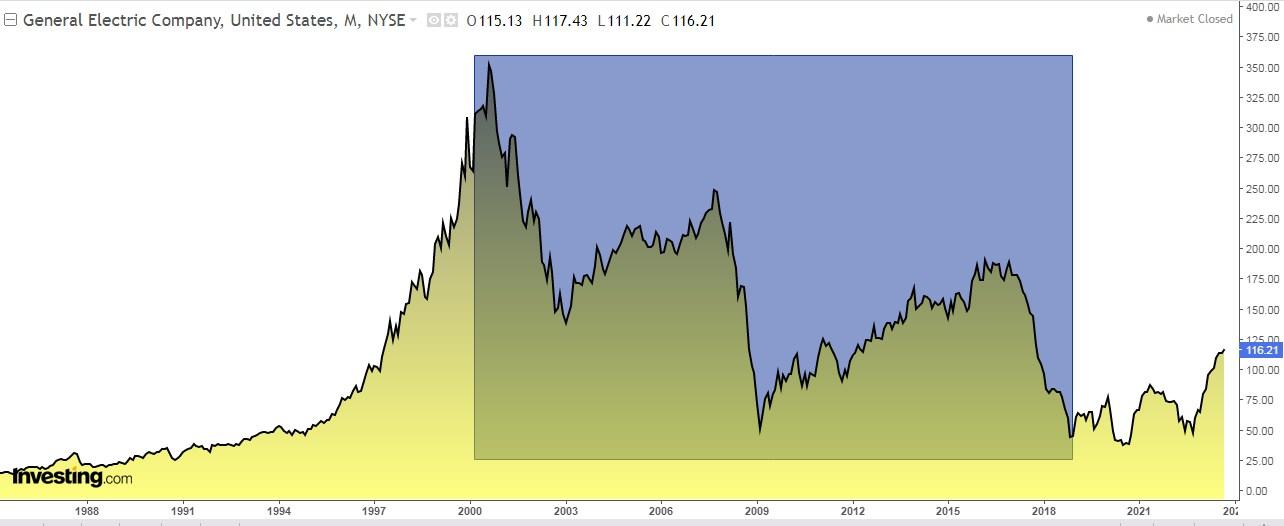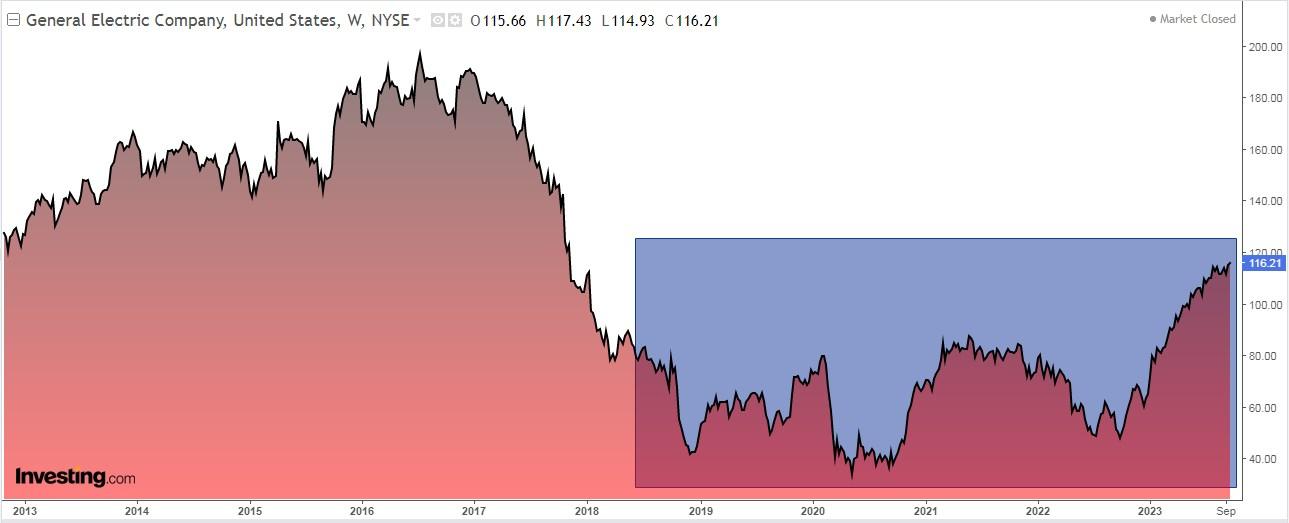- In theory, stocks included in indexes tend to rise, while those excluded tend to fall
- However, General Electric stock gained around 50% after being ousted, and Walgreens Boots Alliance stock lost about 50% after joining the index
- As the latter, along with Verizon, and Intel prepare to leave the index, investors wonder if that's such a bad thing after all
The Dow Jones Industrial Average is set to undergo a restructuring that could see three of its constituents - Walgreens Boots Alliance (NASDAQ:WBA), Verizon Communications (NYSE:VZ), and Intel (NASDAQ:INTC) - removed due to their falling share prices.
Unlike market capitalization-weighted indexes such as the S&P 500 and Nasdaq Composite, the Dow Jones is weighted by the stock price. This means that the higher a component's stock price, the more influence it wields within the Dow Jones.
In the summer of 2018, the index underwent a significant change. General Electric (NYSE:GE) made its exit, and Walgreens Boots Alliance stepped in to take its place. This was a major development because General Electric had been a part of the index since its inception in 1896.
General Electric, once a global heavyweight, had entered a period of decline that began after it reached its all-time highs in 2000 and continued until its removal from the index.
But since getting excluded from the index, the stock has gained about 50%, rising from $79 to $116. 
In contrast, since joining the Dow Jones, Walgreens Boots Alliance's stock has declined from $65 to $22, marking a drop of over 50%.

Normally, when a company joins a stock market index, its stock price tends to rise, and conversely, when a company leaves an index, its stock price often falls. While this isn't a strict rule, it's a common pattern.
The reason for this pattern lies in the various benefits of being included in a stock index:
- Credibility: Inclusion signals solvency, transparency, and prestige to investors.
- Enhanced Liquidity: Shareholders can more easily buy and sell their holdings.
- Increased Visibility: The company gains greater national and international visibility.
- Institutional Investor Attention: Institutional investors like hedge funds, investment funds, pension funds, and ETFs take notice. They can significantly impact stock prices because of the large sums of money they handle. When they buy shares in a company, its stock price tends to rise.
- ETF and Passive Fund Impact: ETFs and passively managed mutual funds that aim to replicate an index must purchase shares of newly added companies. This increased demand drives up share prices.
However, in the case of General Electric and Walgreens Boots Alliance, the usual pattern was reversed.
Of course, there are times when you run the risk of buying shares when they're at their peak and selling them when they're at their lowest, and that's precisely what happened in the case of these two companies in the Dow Jones.
Why Is Dow Jones Contemplating the Removal of These Three Companies?
Walgreens Boots Alliance: Despite its plan to enhance healthcare services and reduce annual operating costs, its stock performance hasn't reflected these efforts. The drugstore chain also faces issues such as declining customers. Possible replacements for Walgreens could be leading medical device companies like Medtronic (NYSE:MDT) or Intuitive Surgical (NASDAQ:ISRG).
Verizon Communications: Since its inclusion in the Dow Jones in April 2004, its shares have barely budged, rising only 0.53%. High debt levels and a limited growth rate have hampered its performance. Verizon might be substituted with Alphabet (NASDAQ:GOOGL) or Meta Platforms (NASDAQ:META).
Intel: Included in the Dow Jones since November 1999, Intel is also at risk of being dropped from the index. Its shares accounted for only 249.23 Dow Jones points as of Tuesday. Market share losses to key competitors like Advanced Micro Devices (NASDAQ:AMD) or Nvidia (NASDAQ:NVDA) could lead to its removal.
General Electric and Walgreens Boots Alliance Fundamentals:
General Electric (GE): Founded in 1880 in New York and headquartered in Fairfield, Connecticut, GE operates in over 100 countries across sectors including aviation, energy, technology, and financial services. On October 25, it's distributing a dividend of $0.080. To be eligible for this dividend, shares must be held before September 25.
On July 25, GE reported strong numbers, surpassing market forecasts with a 48.1% increase in earnings per share and a 10.2% rise in actual income. The next earnings report is due on October 24, with a projected 87% increase in EPS and an 8.4% revenue growth for 2024. Over the last 12 months, its shares have surged by 124.51%, 11.80% in the last 3 months, and 3.74% in the last month. InvestingPro models indicate potential in the range of $150-$155.
Walgreens Boots Alliance (WBA): Based in Deerfield, Illinois, this company owns Walgreens retail pharmacy chains in the U.S. and Boots in the U.K., along with several pharmaceutical manufacturing and distribution firms. It was formed on December 31, 2014, after Walgreens acquired the remaining 55% stake in Alliance Boots.
On October 12, it's set to reveal its financial results, with expectations of a 34.39% drop in earnings per share and a 3.24% decline in actual revenue. For 2024, forecasts predict a revenue increase of 4.4%. In the last 12 months, its shares have fallen by 31.33%, by 30.76% in the last 3 months, and by 16.68% in the last month.
***
Disclaimer: This article is written for informational purposes only; it does not constitute a solicitation, offer, advice, counsel or recommendation to invest as such it is not intended to incentivize the purchase of assets in any way. As a reminder, any type of assets, is evaluated from multiple points of view and is highly risky and therefore, any investment decision and the associated risk remains with the investor. The author does not own the stocks mentioned in the analysis.

